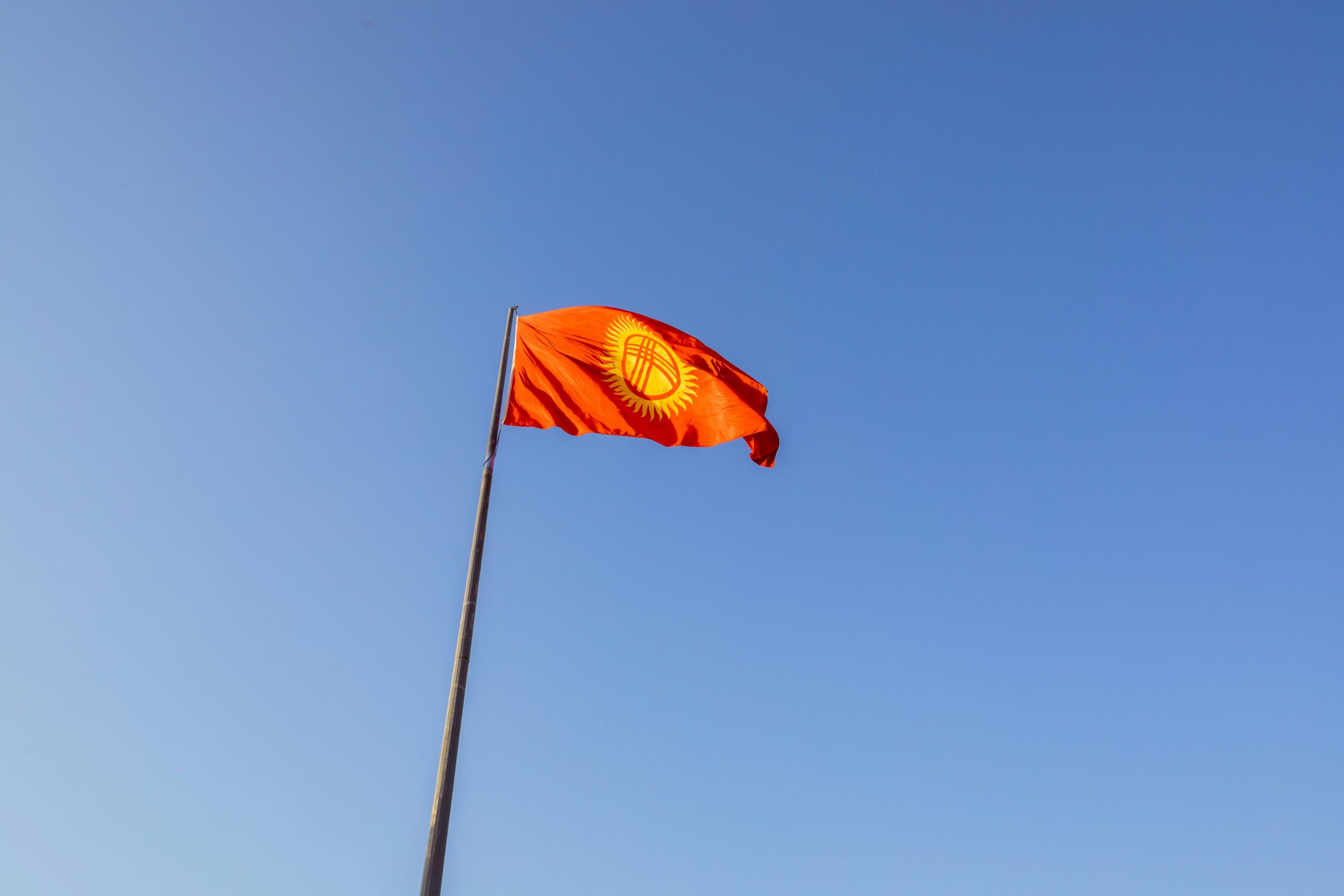
Debate rages in Kyrgyzstan over contentious flag redesign
A proposal to change the design of Kyrgyzstan’s national flag has sparked a heated debate in the Central Asian country, where some see it as a sign of the president’s growing authoritarianism and others as a necessary update to a symbol of independence.
The current flag, adopted in 1992 after Kyrgyzstan gained sovereignty from the Soviet Union, features a red background with a yellow sun that has 40 wavy rays and a circular opening in the center, representing the tunduk, the wooden crown of a traditional Kyrgyz yurt, or nomadic tent.
But some lawmakers and President Sadyr Japarov, who came to power in 2021 after a popular uprising, have argued that the flag looks too much like a sunflower, which in Kyrgyz culture is associated with fickleness and servility. They have proposed to replace the wavy rays with straight ones, creating a more geometric and angular sun.
The initiative, which passed the first of three readings in parliament on Nov. 29 with 66 votes in favor and eight against, has drawn criticism from opposition parties, civil society groups and ordinary citizens, who accuse the president and his allies of trying to impose their personal preferences on the nation and distract from more pressing issues, such as the economic crisis and the border dispute with neighboring Tajikistan.
“The flag is a sacred symbol of our statehood and our people’s identity. It reflects our history, our culture, our traditions and our values. It is not something that can be changed on a whim or for political reasons,” said Aida Kasymalieva, a member of parliament from the Ata Meken party, which opposes the flag change.
She said that the current flag was chosen by a nationwide referendum in 1992, and that any attempt to alter it should also be put to a popular vote. She also dismissed the argument that the flag resembles a sunflower, saying that it is a matter of perception and that many Kyrgyz people are proud of the flag’s unique and distinctive design.
“The flag is not a sunflower, it is a sun with a tunduk, which symbolizes our unity, our hospitality, our connection to nature and our nomadic heritage. It is a beautiful and meaningful flag that has been recognized and respected around the world,” she said.
Some critics of the flag change have also suggested that it is part of a broader agenda by Japarov and his supporters to consolidate their power and undermine the country’s fragile democracy. Japarov, a former nationalist politician who was freed from prison by his supporters during the October 2020 unrest that toppled the previous government, won a landslide victory in a snap presidential election in January. He also pushed for a constitutional referendum in April that granted him more authority and reduced the role of parliament.
“Japarov wants to change everything that was established by the previous governments and create his own legacy. He wants to show that he is the new leader, the new father of the nation, and that he can do whatever he wants,” said Asel Doolotkeldieva, a political analyst and lecturer at the American University of Central Asia in Bishkek.
She said that the flag change is a symbolic move that aims to rally Japarov’s base of supporters, especially in the rural areas, where he enjoys more popularity than in the urban centers. She also said that it is a way to divert attention from the social and economic problems that the country faces, as well as from the allegations of corruption and human rights violations that have plagued his administration.
“The flag change is a cheap and easy way to create a sense of achievement and national pride, without actually addressing the real challenges and needs of the people. It is also a way to silence the critics and the opposition, who are portrayed as enemies of the state and the nation,” she said.
But Japarov and his allies have defended the flag change as a legitimate and necessary step to modernize the country’s image and identity. They have argued that the current flag is outdated and does not reflect the aspirations and values of the new generation of Kyrgyz citizens.
“The current flag was adopted at a time when we were still under the influence of the Soviet Union and we did not have a clear vision of our future. It is time to change it and to create a new flag that represents our progress, our development, our independence and our sovereignty,” said Nurlan Shakiev, the speaker of parliament and a co-initiator of the bill to change the flag.
He said that the new flag design was based on historical and cultural research, and that it was inspired by the ancient symbols and patterns of the Kyrgyz people. He also said that the new flag would be more recognizable and distinctive on the international stage, and that it would boost the country’s image and reputation.
“The new flag is a sun with straight rays, which symbolizes our strength, our energy, our dynamism and our optimism. It is a flag that shows that we are a proud and confident nation, that we are not dependent on anyone, and that we are ready to face any challenges and opportunities,” he said.
He also dismissed the criticism and the backlash against the flag change, saying that it was driven by political motives and personal interests. He said that the majority of the Kyrgyz people support the flag change, and that the parliament would continue the legislative process and pass the final reading of the bill by the end of the year.

